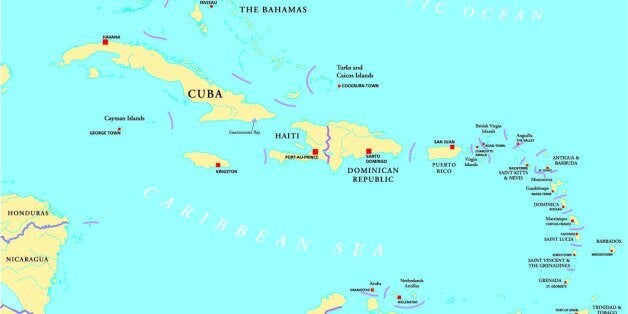
In the ongoing commotion over Obama's normalization of relations with Cuba, it is easy to forget that the two countries have a long and tangled relation that predates either of them even being nations. Obama's moves toward normalization, however eventful, are only the latest steps in a centuries-old dance of attraction and repulsion that has long defined relations between the two nations.
The desire to trade with Cuba played a major role in the American colonies' drive for independence, and a robust illegal trade with the island predated the U.S. Revolutionary War. The first U.S. President to attempt to buy Cuba outright was Thomas Jefferson, fresh off the Louisiana Purchase in 1803. It was the first of several such offers over the next century, as successive U.S. administrations echoed John Quincy Adams's famous statement that "if an apple severed by the tempest from its native tree cannot choose but fall to the ground, Cuba... can gravitate only towards the North American Union which by the same law of nature cannot cast her off from its bosom."
Nor did American desire for the island go unrequited. When Britain's abolition of slavery in 1807 threatened Cuba's labor-intensive sugar industry, the native plantocracy turned to U.S. annexation as a way of protecting their financial interests. The plantocracy's ambivalence toward Cuban independence played a major role in the island's first failed rebellion in 1868-78, and nearly undermined José Martí's efforts to build a revolutionary party in the 1880s and 1890s.
It was in fact Martí who grasped that the U.S.'s emerging imperial power at the end of the 19th century threatened the dream of Cuban independence. In his 1891 essay "Our America," he warned of the "giants with seven-league boots who can bring that boot down upon" the island. "What is left of the village in [Latin] America," he wrote, "had better awaken." Martí and other revolutionary leaders came to realize that a rising U.S., coupled with a declining Spanish Empire, would spell doom for their efforts if they did not act. Yet even as Martí grew to dread U.S. power, he never lost his original admiration for the nation of Washington and Lincoln, or as he wrote in 1881, of his sense of good fortune to be exiled in "a country where every one looks like his own master."
The revolutionaries' goal was to strike quickly and decisively, in order to topple the Spanish and pre-empt U.S. intervention. That did not happen, with Martí's death on the battlefield only the first of a series of setbacks that dragged out the war until the U.S. finally intervened in 1898. What has transpired since then is, as they say, history: The U.S. controlled Cuba as a virtual colony until the 1930s, and continued to enjoy a close economic and political relationship with the island nation until the Cuban Revolution in 1959.
Although the rise of Castro transformed the U.S.-Cuba relationship to a mostly antagonistic one, the nations' fascination with each other over the years has hardly diminished. From the Bay of Pigs to Mariel, from George H.W. Bush's now-ridiculous prediction that he would be "the first president to set foot in a Castro-free Cuba" to the still-ongoing mass exodus of Cubans to South Florida, the two nations have persisted in their mutual obsession.
The present hysteria on both sides of the political spectrum over Obama's seeming rapprochement with Raul Castro is thus severely overstated. The so-called new approach does not remotely signal a Cuban capitulation to U.S.-style capitalism, or the Obama Administration's acceptance of Cuba's Marxist regime or abysmal human-rights record. It is merely the latest step in a centuries-long dance of attraction and repulsion, which even now has no end in sight.
This post is part of a Huffington Post blog series called "90 Miles: Rethinking the Future of U.S.-Cuba Relations." The series puts the spotlight on the emerging relations between two long-standing Western Hemisphere foes and will feature pre-eminent thought leaders from the public and private sectors, academia, the NGO community, and prominent observers from both countries. Read all the other posts in the series here.
If you'd like to contribute your own blog on this topic, send a 500-850-word post to impactblogs@huffingtonpost.com (subject line: "90 Miles").